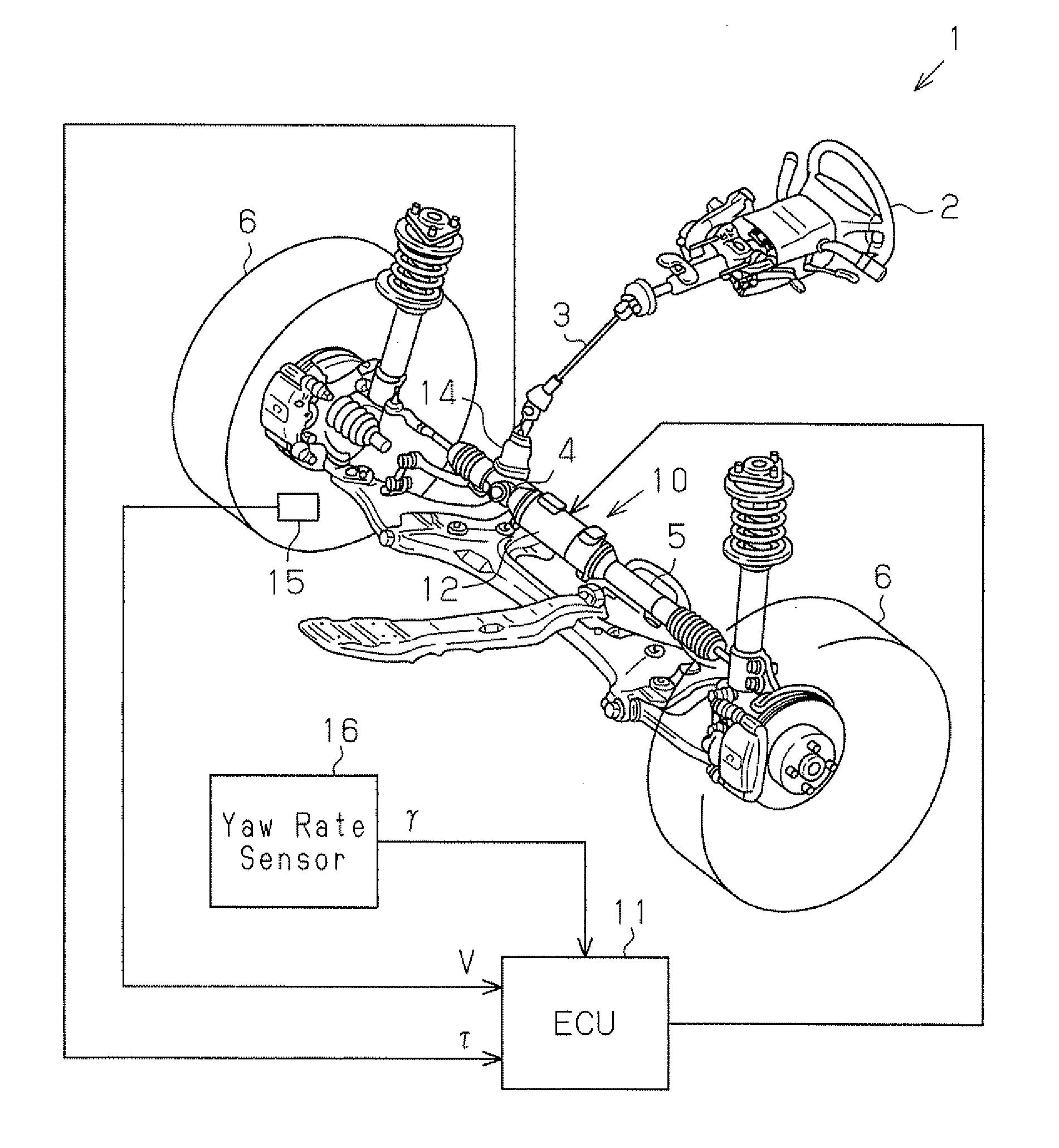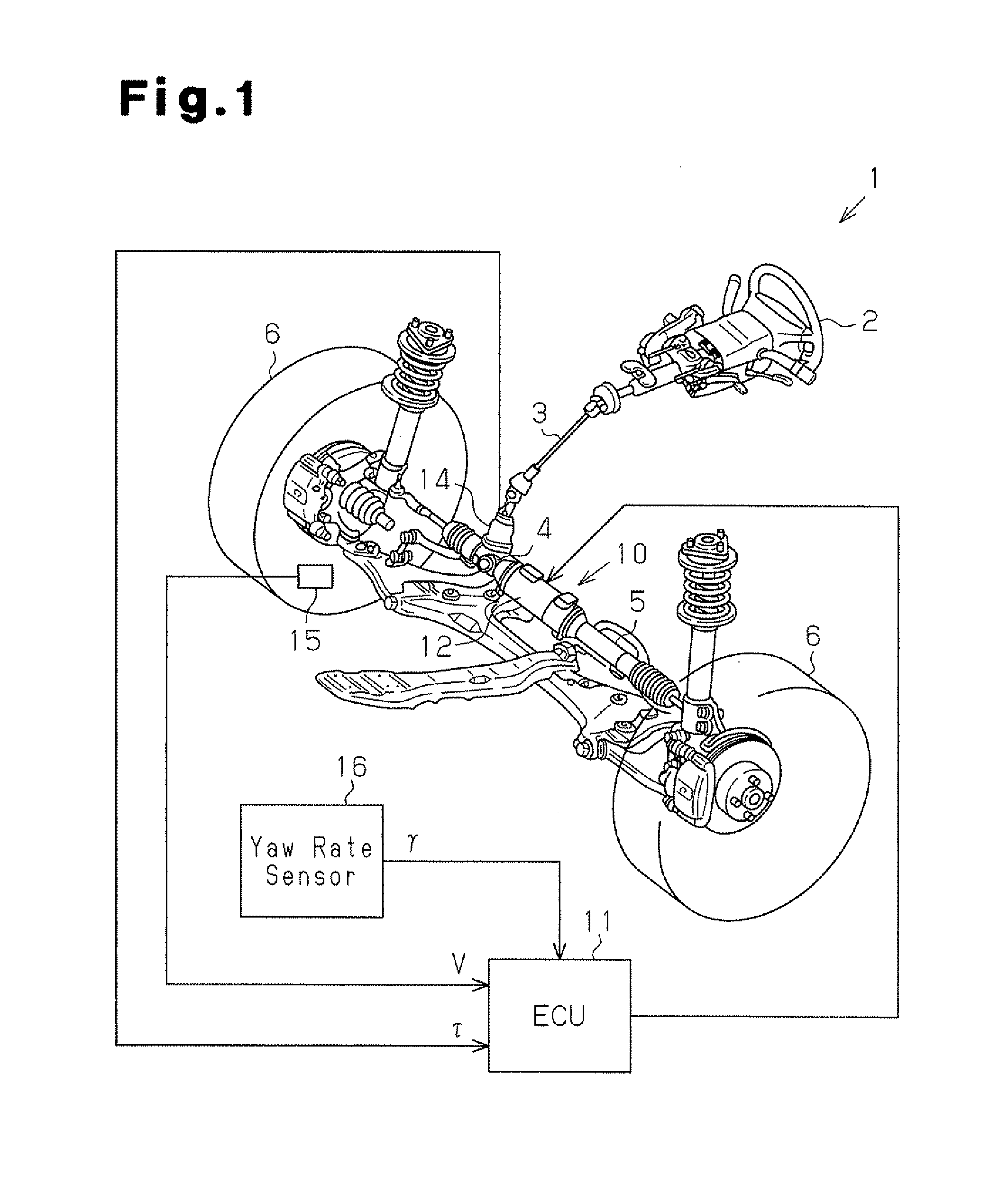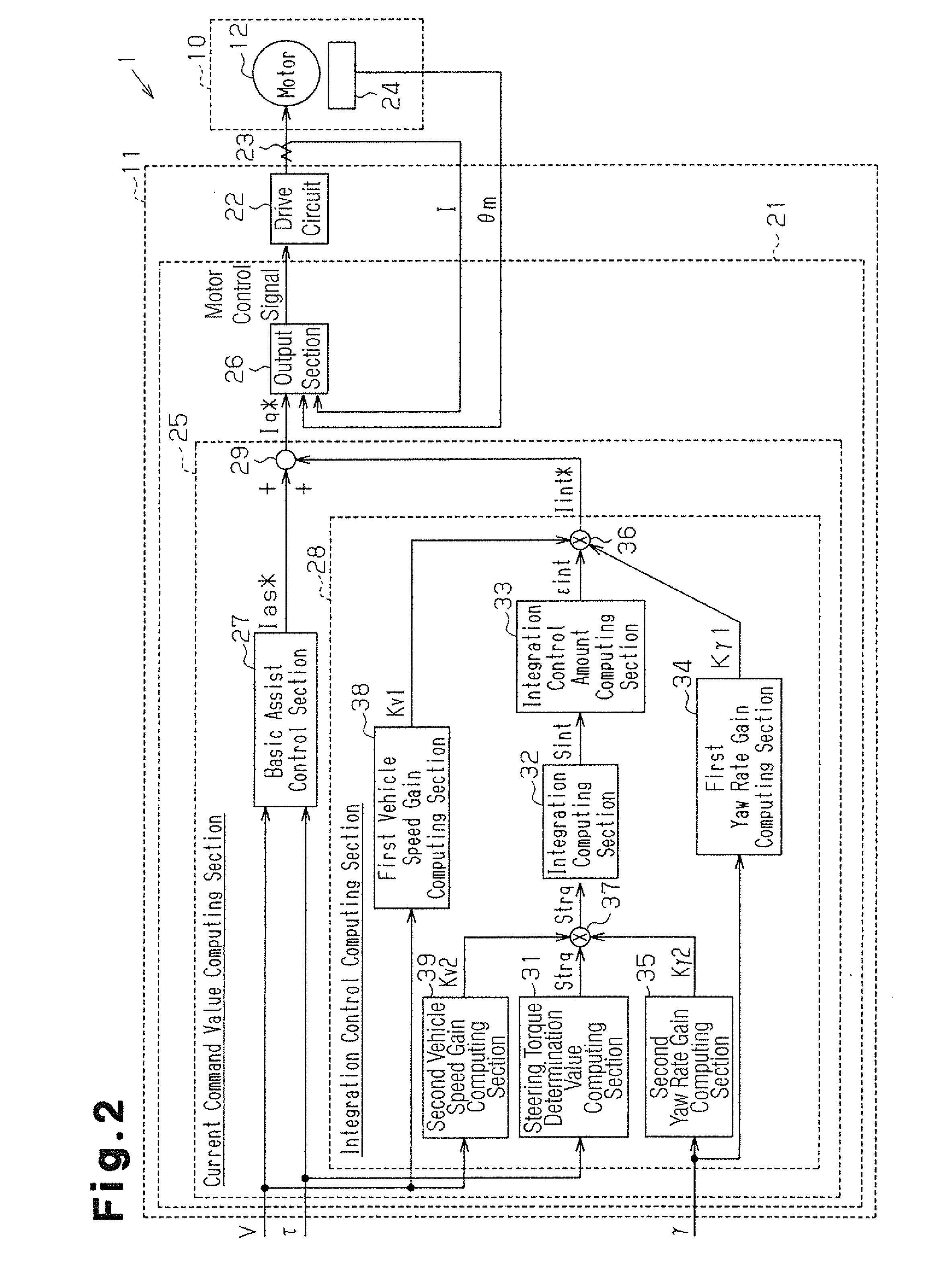Electric power steering device and method for controlling the same
a technology of electric power steering and electric motor, which is applied in the direction of steering initiation, instruments, vessel construction, etc., can solve the problems of excessive light steering or lowering rigid feel, and the prior art cannot solve the above presented problems, and achieve the effect of simple structure and effective application of assist for
- Summary
- Abstract
- Description
- Claims
- Application Information
AI Technical Summary
Benefits of technology
Problems solved by technology
Method used
Image
Examples
Embodiment Construction
[0030]An electric power steering device (EPS) 1 according to one embodiment of the present invention will now be described with reference to the drawings.
[0031]As shown in FIG. 1, a steering wheel 2 is fixed to a steering shaft 3. The steering shaft 3 is coupled to a rack 5 via a rack-and-pinion mechanism 4. Rotation of the steering shaft 3 accompanying a steering operation is converted into a reciprocating linear motion of the rack 5 by the rack-and-pinion mechanism 4. The reciprocating linear motion of the rack 5 changes the steered angle of steerable wheels 6, or the tire angle, thereby changing the travel direction of the vehicle.
[0032]The EPS 1 includes an EPS actuator 10 serving as a steering force assist device, and an ECU 11 serving as control device. The EPS actuator 10 applies an assist force that assists a steering operation of the steering system. The ECU 11 controls operation of the EPS actuator 10.
[0033]The EPS actuator 10 is a rack type EPS actuator in which a motor 1...
PUM
 Login to View More
Login to View More Abstract
Description
Claims
Application Information
 Login to View More
Login to View More - R&D
- Intellectual Property
- Life Sciences
- Materials
- Tech Scout
- Unparalleled Data Quality
- Higher Quality Content
- 60% Fewer Hallucinations
Browse by: Latest US Patents, China's latest patents, Technical Efficacy Thesaurus, Application Domain, Technology Topic, Popular Technical Reports.
© 2025 PatSnap. All rights reserved.Legal|Privacy policy|Modern Slavery Act Transparency Statement|Sitemap|About US| Contact US: help@patsnap.com



